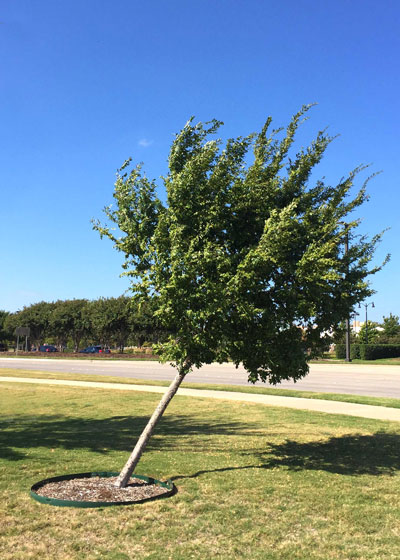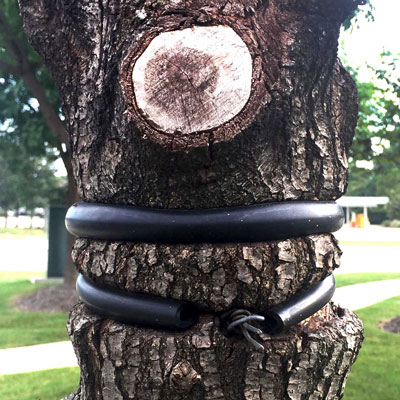In case you ever ask…
I’m asked a couple of times a month about straightening a tree that has somehow slipped out of plumb. How can it be done? How long does the support have to be left in place?
I was looking back through several thousand old photos as I moved files to a new computer on Tuesday. I came across this example. Sometimes trees blow over in windstorms. Other times a car or riding mower pushes them off course.

When this happens, your only recourse is to dig and reset the tree into a vertical position. Pushing or pulling it upright, while it may fix the problem visually, won’t last. As soon as you release the support the tree will make its way back to the leaning position – even if it’s a year or two later.
It’s my opinion that you need to stake any new tree to hold it upright.
The larger the tree, the more resistance its canopy will make to prevailing south winds, and the more likely the tree will be to be pushed to the north.
I recommend securing any new tree of any size with three stakes, one directly south of the trunk, one to the northwest and one to the northeast.
Use cable out to the stakes to secure the tree in place. Run the cable through a section of hose to protect the trunk from rubbing. Use cable clamps to hold the cables in place, and keep it taut at all times.
Leave the stakes and guy wires in place until the tree has become established and started to grow – usually a couple of years.
Be careful that you don’t leave the cables in place long enough that the trunk starts to grow around them. That kind of girdling can soon ruin a tree by cutting off flow of sugars from the leaves down to the roots.

